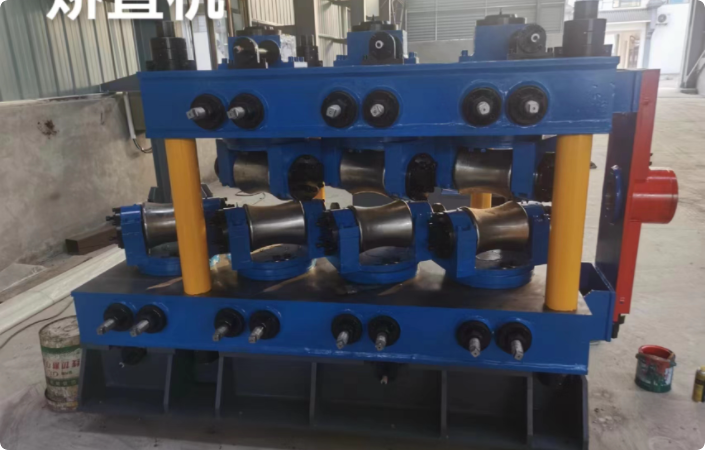Efficient Production Line for Plastic Pipe Manufacturing and Quality Control Solutions
The Evolution and Importance of Plastic Pipe Production Lines
In recent years, the demand for plastic pipes has surged, driven by their versatility, durability, and cost-effectiveness. From water supply systems to drainage solutions, plastic pipes are integral to modern infrastructure. At the heart of this growing industry lies the plastic pipe production line, a sophisticated system designed to streamline the manufacturing process and ensure high-quality products.
The Components of Plastic Pipe Production Lines
A typical plastic pipe production line comprises several key components, each playing a crucial role in the manufacturing process. The first stage involves raw material preparation, where plastic pellets, primarily made from polymers like PVC, HDPE, and PP, are fed into the extruder. The extruder melts the plastic granules and forms a molten material that can be shaped into pipes.
The extrusion process is critical and requires precise temperature control to ensure proper plasticization. Advanced production lines feature high-tech temperature control systems and real-time monitoring to maintain optimal processing conditions.
Once the molten plastic exits the extruder, it passes through a die that shapes it into the desired profile. The die design is vital because it directly influences the final product's dimensions, wall thickness, and overall quality. Following extrusion, the pipes are cooled using various techniques, such as water baths or air cooling, to solidify their structure.
Quality Control and Testing
Quality assurance is paramount in the plastic pipe production line, as these products must adhere to stringent industry standards. After the cooling process, pipes undergo rigorous quality control tests. This includes measuring dimensions, checking for consistent wall thickness, and conducting pressure tests to ensure the pipes can withstand their intended applications.
Modern production lines are increasingly automated, incorporating advanced technologies such as AI and machine learning to enhance quality control. Automated inspection systems can quickly identify defects or inconsistencies, allowing for immediate adjustments to the manufacturing process. This not only improves product quality but also reduces waste and operational costs.
plastic pipe production line

Innovative Technologies in Production Lines
The landscape of plastic pipe manufacturing is evolving, with innovations emerging to enhance efficiency and sustainability. One notable trend is the integration of recycling practices into production lines. Manufacturers are increasingly incorporating recycled materials into their processes, reducing environmental impact and contributing to a circular economy. This not only meets growing consumer demand for eco-friendly products but also helps companies meet regulatory requirements regarding plastic waste.
Furthermore, advancements in 3D printing technology are beginning to make their mark on the plastic pipe industry. While still in its infancy, 3D printing has the potential to revolutionize how pipes are designed and produced. Customization options, rapid prototyping, and reduced waste are just a few of the advantages this technology could bring.
The Future of Plastic Pipe Production
As we look to the future, the plastic pipe production line continues to evolve. The increasing demand for smart infrastructure means that manufacturers will need to innovate continuously, developing pipes that are not only strong and durable but also equipped with smart technology for better monitoring and management.
Sustainability will remain at the forefront of the industry, with manufacturers seeking ways to minimize the carbon footprint of their production lines. This could involve harnessing renewable energy sources, improving energy efficiency, and further integrating recycled materials into their products.
Moreover, the global push for infrastructure upgrades and urbanization will drive the growth of the plastic pipe market. With water scarcity and environmental challenges being at the forefront of many governmental agendas, plastic pipes will likely play a key role in addressing these issues through efficient water management and distribution systems.
Conclusion
The plastic pipe production line is a cornerstone of modern infrastructure, evolving to meet the challenges of a rapidly changing world. With advancements in technology, a focus on quality control, and a commitment to sustainability, the industry is poised for continued growth and innovation. As we move forward, the integration of these elements will ensure that plastic pipes remain essential components of the systems that support our daily lives.
-
High Frequency Straight Seam Welded Pipe Production Line-BzZhou Xinghua Machinery Equipment Manufacturing Co., LTD.|Precision Welding, High EfficiencyNewsJul.30,2025
-
High Frequency Straight Seam Welded Pipe Production Line|BzZhou Xinghua|Precision Welding&EfficiencyNewsJul.30,2025
-
High Frequency Straight Seam Welded Pipe Production Line - BzZhou Xinghua|Precision Engineering&EfficiencyNewsJul.30,2025
-
High-Frequency Straight Seam Welded Pipe Production Line-BzZhou Xinghua Machinery Equipment Manufacturing Co., LTD.NewsJul.30,2025
-
High-Frequency Straight Seam Welded Pipe Production Line-BzZhou Xinghua Machinery Equipment Manufacturing Co., LTD.|Precision Manufacturing, High EfficiencyNewsJul.30,2025
-
High Frequency Straight Seam Welded Pipe Production Line-BzZhou Xinghua Machinery Equipment Manufacturing Co., LTD.|Precision Steel Pipe Manufacturing&Industrial EfficiencyNewsJul.29,2025


